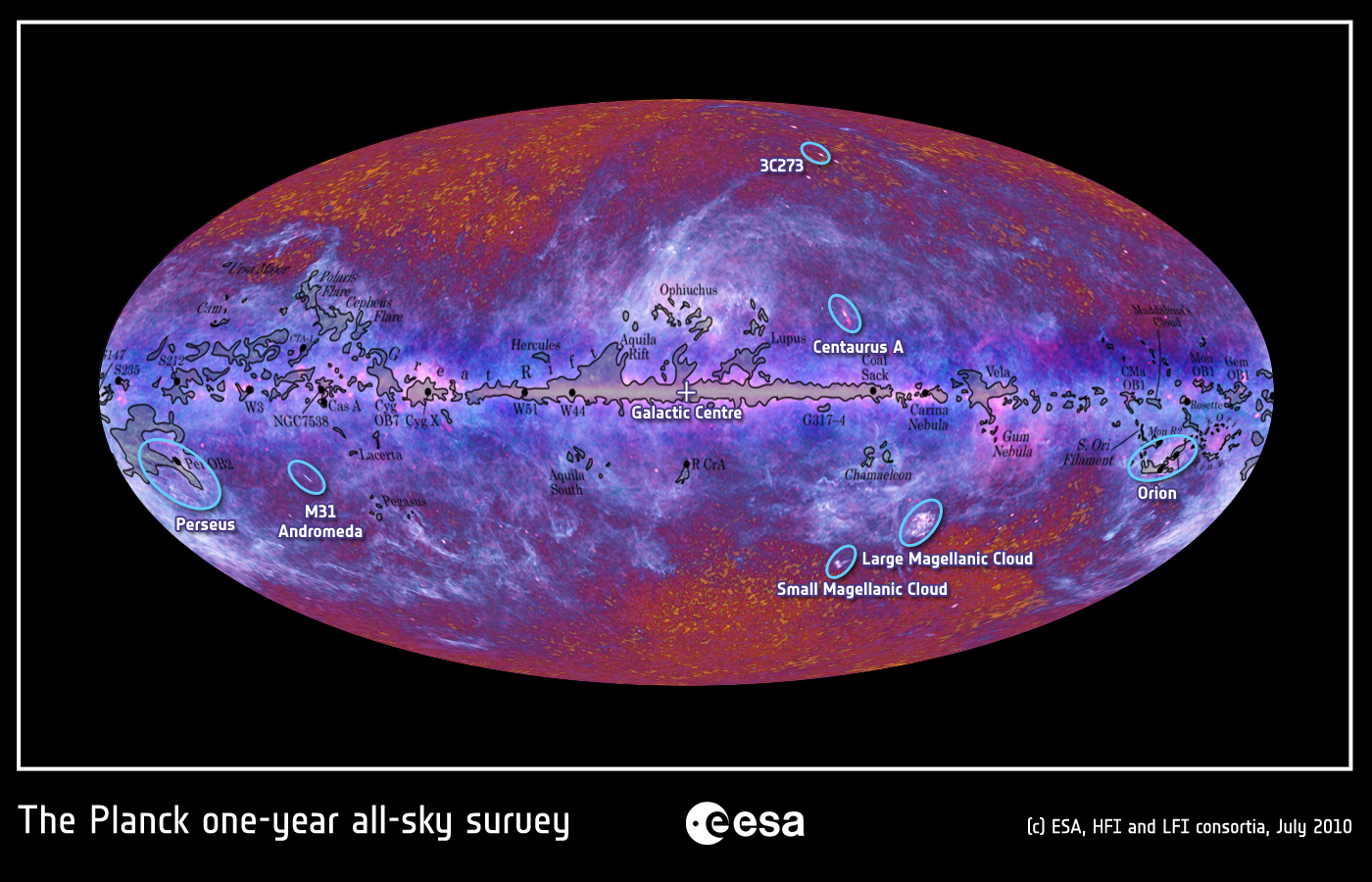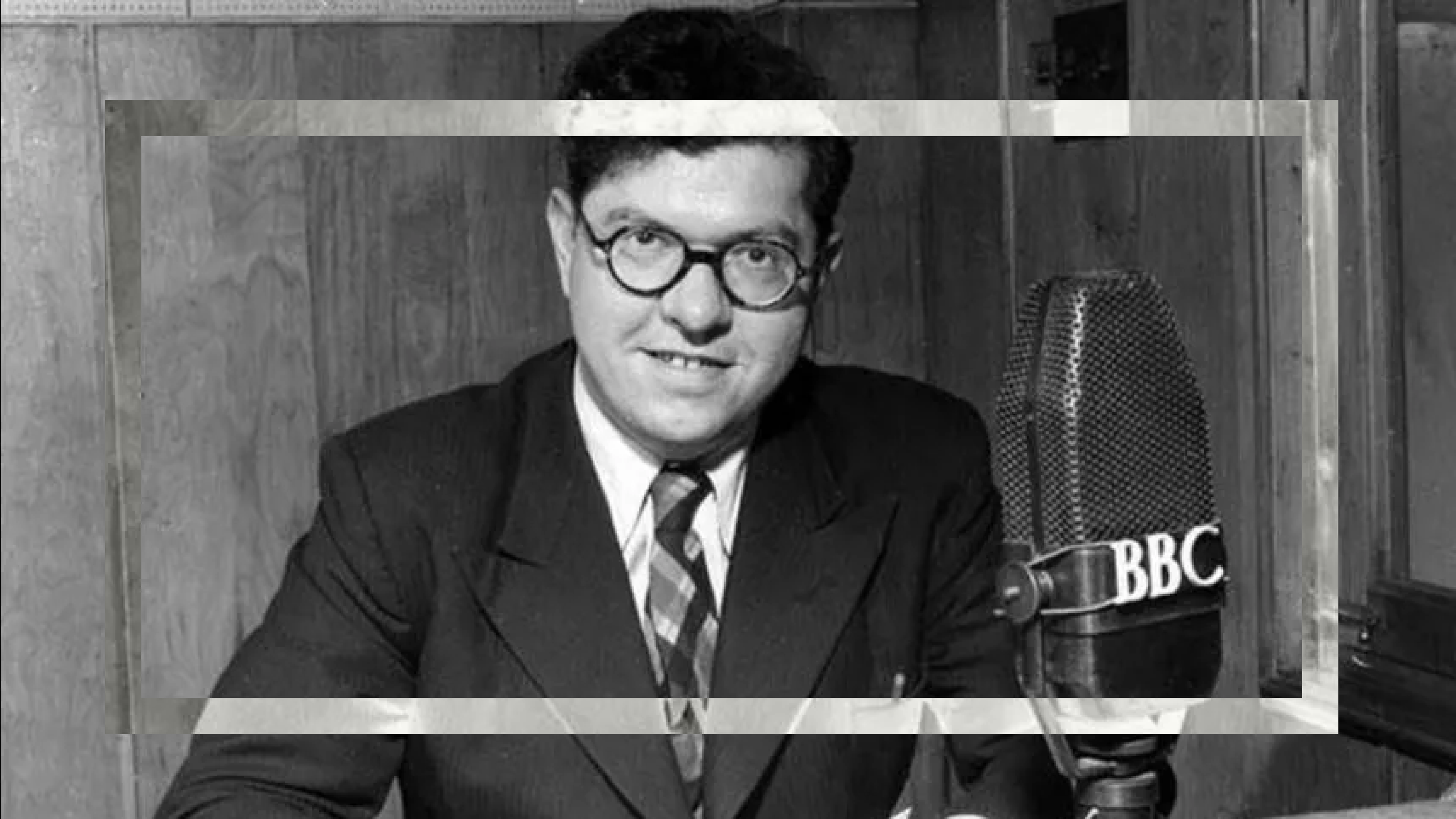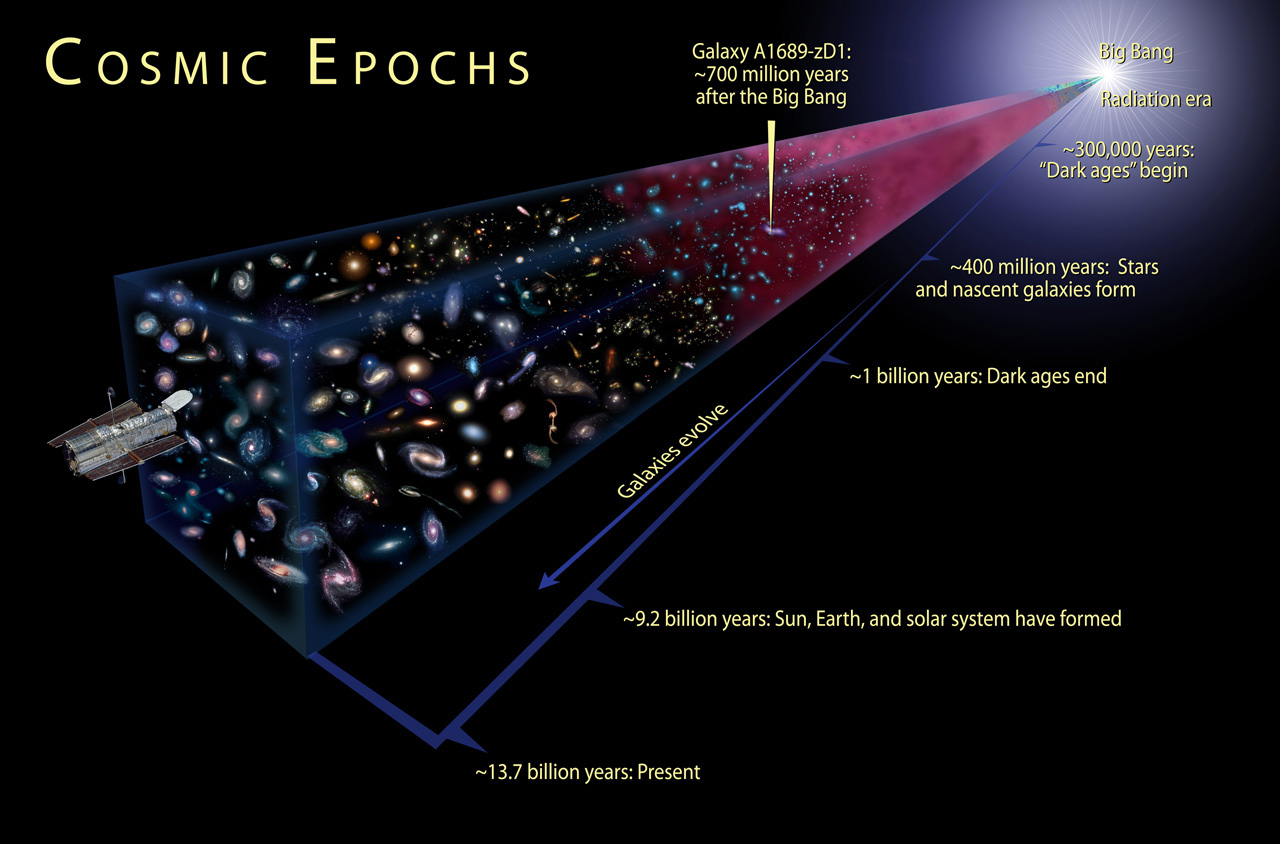After 13.8 billion years, why hasn’t the Big Bang faded away?

- When the Big Bang first occurred, the Universe was a hot, dense plasma, filled with particles, antiparticles, and an enormous number of photons: the quanta that make up light.
- As the Universe expanded and cooled, the antimatter annihilated away, leaving a small amount of matter behind that became neutral atoms. When those formed, the photons simply streamed freely: in straight lines.
- And yet, even now, 13.8 billion years after those events, we can still observe those photons — that light — left over from the Big Bang. Here’s why they haven’t faded away, even after all of this time.
For the past 13.8 billion years, our Universe has been expanding, cooling, and gravitating. The hot Big Bang itself was, at least for our observable Universe, a one-time event that was the proverbial starting gun for everything that’s happened since. As we expanded and cooled, we formed atomic nuclei, neutral atoms, stars, galaxies, and eventually, rocky planets like Earth. Although extremely early relic signals exist — including a background of gravitational waves generated during the phase of cosmic inflation that preceded the Big Bang and a background of neutrinos released just a second after the hot Big Bang — the earliest signal we’ve observed is today’s cosmic microwave background (CMB), created when the Universe was a scant 380,000 years old.
The existence of this leftover radiation, originally known as the “primeval fireball” when it was theorized, was an astonishing prediction dating back to George Gamow all the way in the 1940s, and it shocked the astronomical world when it was directly detected back in the 1960s. Over the subsequent 60 years, we’ve measured its properties exquisitely, learning a tremendous amount about our Universe in the process. What’s perhaps most remarkable, however, is that this early, relic signal still persists a whopping 13.8 billion years after atoms first became neutral and this background radiation was first emitted. It still hasn’t faded away, and the scientific explanation for why is nothing short of profound.
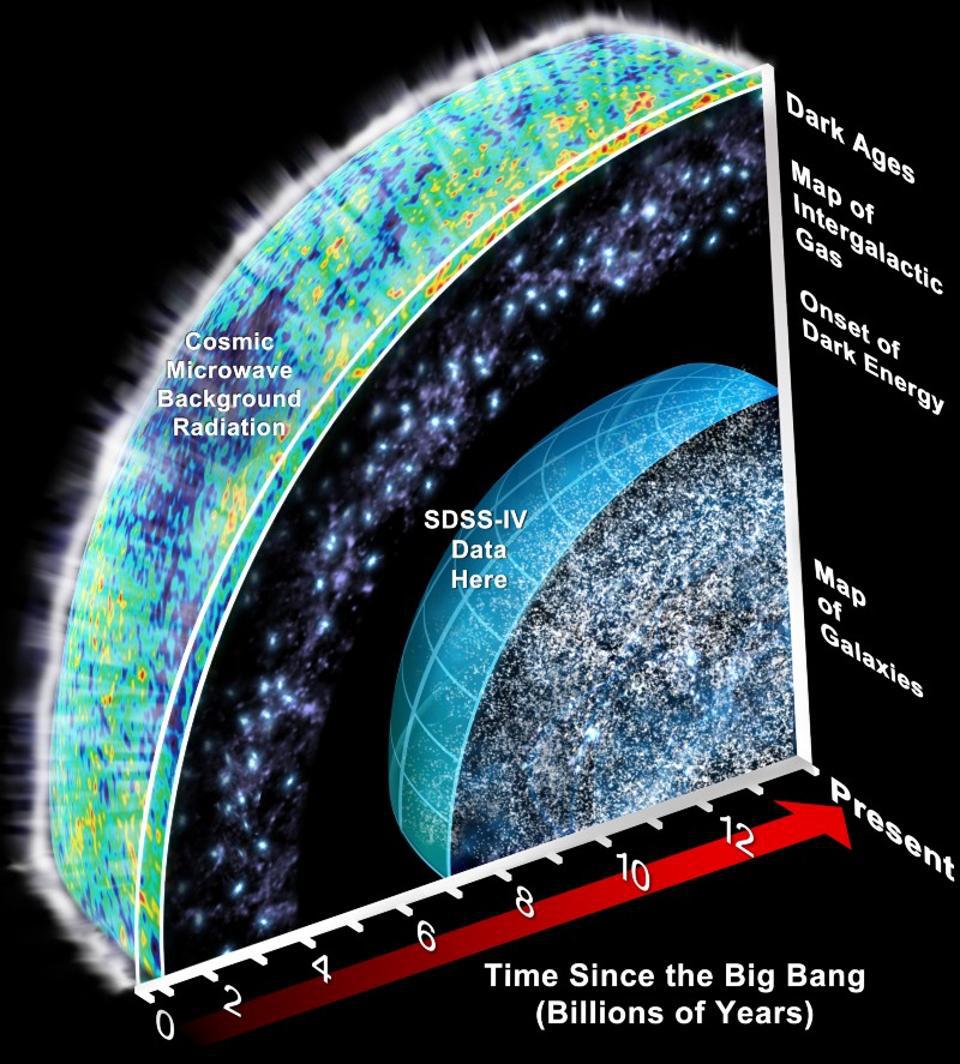
Whenever we look out, from our location within the Universe, at any light-emitting object at all, we have to keep in mind that we aren’t seeing that object as it exists “now,” or at the same moment in time as if we counted the seconds forward starting at the moment of the Big Bang. Instead, we’re seeing that object as it was in the past: back when that light was emitted. That light is then required to journey through the Universe until it arrives at our eyes.
- When we see our Sun, we’re not observing the light it’s emitting right now, but rather the light it emitted 8 minutes and 20 seconds ago: the amount of time it takes light to traverse the Earth-Sun distance.
- When we look at a star that’s hundreds or thousands of light-years away, we’re seeing it as it was hundreds or thousands of years ago. It’s possible, for instance, that Betelgeuse has actually gone supernova within the last ~640 years or so, but because it’s 640 light-years away, the light from that possible event hasn’t yet reached us, and so we remain ignorant of whether that’s true or not.
- And when we look at a distant galaxy, we’re seeing light that’s millions or even billions of years old, as we have to account for the travel time of the light from when it was emitted to when it reaches our eyes, after journeying across the ever-expanding Universe.
If a star in a distant galaxy goes supernova, we observe the supernova only for those critical moments when the supernova’s light arrives: not before and not after. When stars are born and/or die, we can observe them only during those moments where that light arrives at our eyes, but not before or after. Once those stars have died, no more light is emitted from them, and hence, once that emitted light has passed by us, we’ll never see them again.
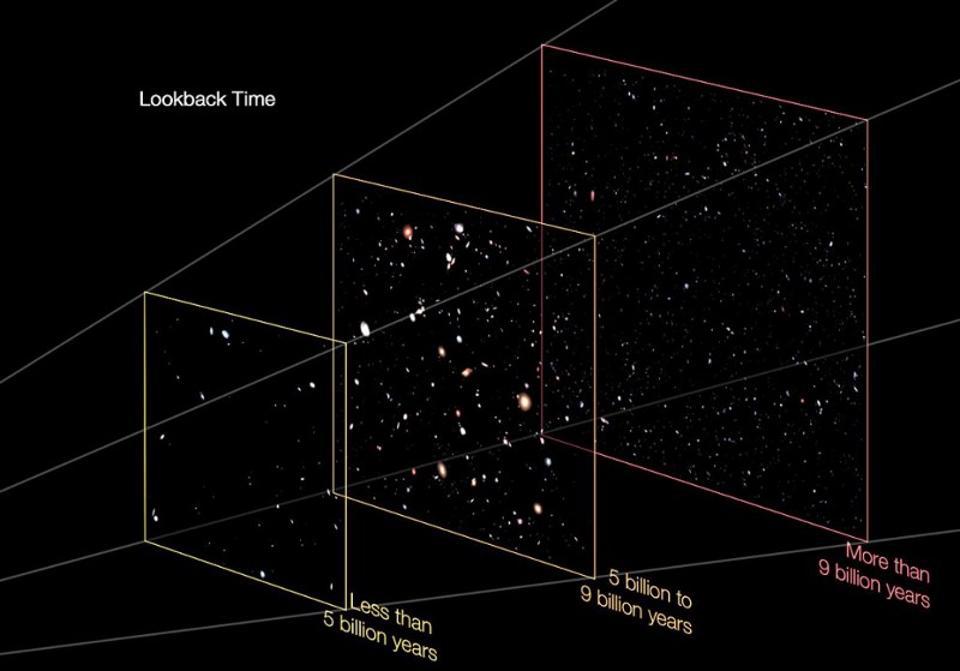
But the light from the Big Bang isn’t like the light from more familiar objects, like stars. Whereas starlight originates from a specific event in spacetime — light that was emitted at a certain moment and at a certain three-dimensional location — the light that we experience as today’s CMB originated at all locations at once: at the moment that the atomic nuclei and electrons, which had previously been free and rampantly collided with photons, combined to form stable, neutral atoms. In order to understand the origin of this light, often called the Big Bang’s “leftover glow,” we have to turn to the theoretical side of astrophysics to understand how this process occurred.
The farther away a galaxy is from us today, the faster it appears to be speeding away from us. The way we observe this is the same way that scientists like Vesto Slipher observed it more than 100 years ago:
- we measure the light coming from a distant object,
- we break that light up into its individual wavelengths,
- we identify sets of emission or absorption lines that correspond to specific atoms, ions, or molecules,
- and we measure the amount that they’re all systematically shifted by, which is always the same percentage, either toward shorter (bluer) or longer (redder) wavelengths.
Although there’s a bit of randomness to each individual galaxy’s motion — up to a few thousand kilometers-per-second, corresponding to the gravitational tugs imparted onto each galaxy by the surrounding matter — there’s a general, unambiguous trend that emerges. On average, the farther away a galaxy is, the greater the amount its light is shifted toward longer wavelengths.

Although this observation — correlating the distance to a galaxy with its recession speed — was first observed back in the 1910s, representing perhaps the earliest evidence in support of an expanding Universe, it wasn’t until the 1940s that the framework that we associate with the modern Big Bang was put forth: by scientist George Gamow. In the 1940s, Gamow realized that a Universe that was expanding today — where the distance between any two points is increasing — must have been not only smaller in the past, but also hotter and denser. The reason is simple, but no one else had assembled the pieces prior to Gamow.
A photon, or quantum of light, possesses a measurable quality to it known as its wavelength, which defines a number of its properties. The energy of an individual photon is inversely proportional to its wavelength: a long-wavelength photon has less energy than a short-wavelength photon. If you have a photon traveling through your Universe and the Universe is expanding, then the space that the photon is passing through is stretching, meaning the photon itself gets stretched to longer wavelengths and lower energies. In the past, therefore, when the Universe was smaller and had been “less stretched” by the expansion of the Universe, these photons must have had shorter wavelengths and higher energies. Higher energies correspond to hotter temperatures, and imply that the Universe was more energetic in its distant past.
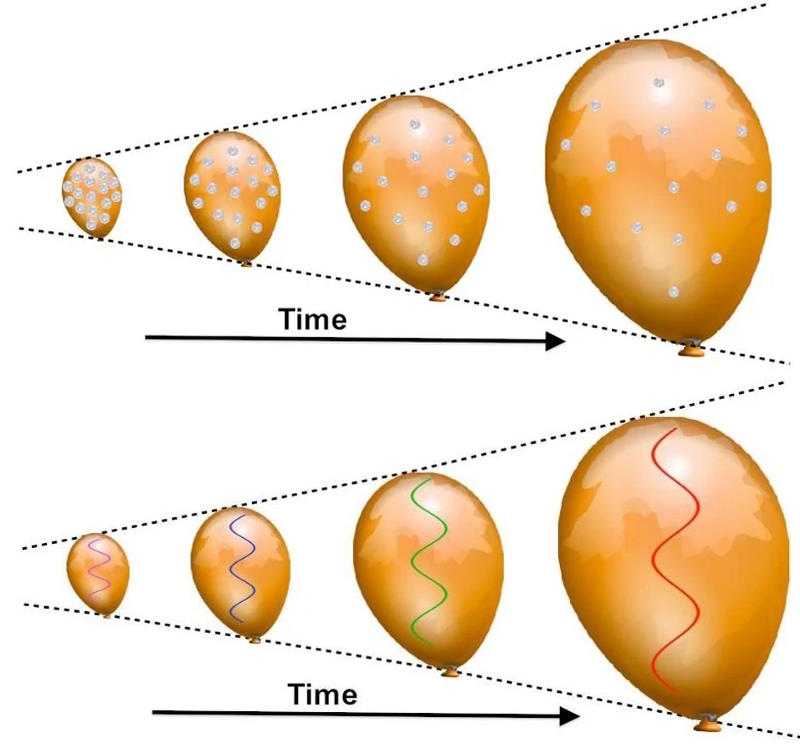
Gamow, in what we might characterize as a scientific leap of faith, extrapolated this as far back as he could fathom. At some point in his extrapolation, he realized that the photons that exist in the Universe would have been heated up to such a high temperature that one of them, on occasion, would have enough energy to ionize hydrogen atoms: the most common type of atom in the Universe. When a photon strikes an atom, it interacts with the electron, either knocking it up to a higher energy level or — if it has sufficient energy — kicking the electron free of the atom entirely, ionizing it. As we extrapolate just a little farther back, more and more photons would have exceeded that critical ionizing threshold, and so all of the would-be atoms would instead be fully ionized: just a bath of free atomic nuclei and electrons.
In other words, there must have been a time in the Universe’s past where there were enough high-energy photons compared to both:
- the amount of energy required to ionize an atom,
- and the number of atoms that exist,
so that every atom was ionized. During this ionized state, the free electrons and photons would scatter off of (i.e., elastically collide with) one another, creating a state of uniform temperature, and when electrons and atomic nuclei found each other, they would be blasted apart practically instantly by a high energy photon. Stepping forward in time, however, the photons lengthen in wavelength and fewer and fewer of them are capable of ionizing atoms. At some point, the number of photons with enough energy to ionize atoms drops below the number of potential atoms in the Universe, and that’s when the net number of neutral atoms increases: from “zero” to “all of them” over a short timespan: from ~200,000 years after the Big Bang to ~500,000 years after it.
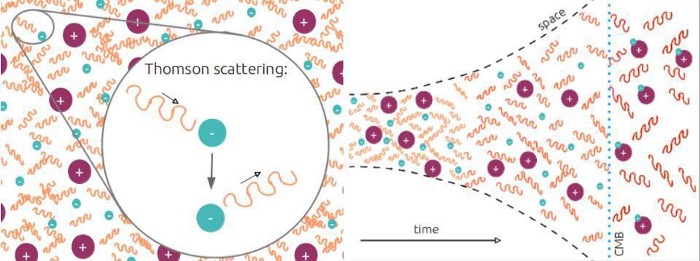
Once all of the atoms have become electrically neutral, the photons that previously were easily scattered by electrons are now compelled to do what we call “free stream” through the Universe, as there are no free charged particles for them to scatter off of. Those photons — i.e., the leftover light from the Big Bang — can only travel in whatever direction they happened to be traveling when those neutral atoms finish forming, and continue traveling unimpeded as the Universe expands.
But unlike the light arriving from stars, galaxies, and other individual astrophysical sources of light, the light that was created in the crucible of the hot Big Bang is fundamentally different. For everything else in the Universe — everything that creates light — that light is:
- created at a particular location in space,
- created at a particular moment in time,
- travels away from the source, through the (expanding) Universe, at the speed of light,
- and arrives at our eyes, the observer, only for that one instant.
For stars, galaxies, supernovae, cataclysmic events, gas clouds, flares, and any other source of radiation, these listed items are all true. But for the Big Bang’s leftover glow, one very, very important thing is different. All of that radiation does come from a particular instant in time, it does travel through the Universe at the speed of light, it does arrive at our eyes at one particular instant. But instead of that light being created at one specific location in space, it was instead created (and “released,” where it began to free stream) at every location throughout space, all at once.
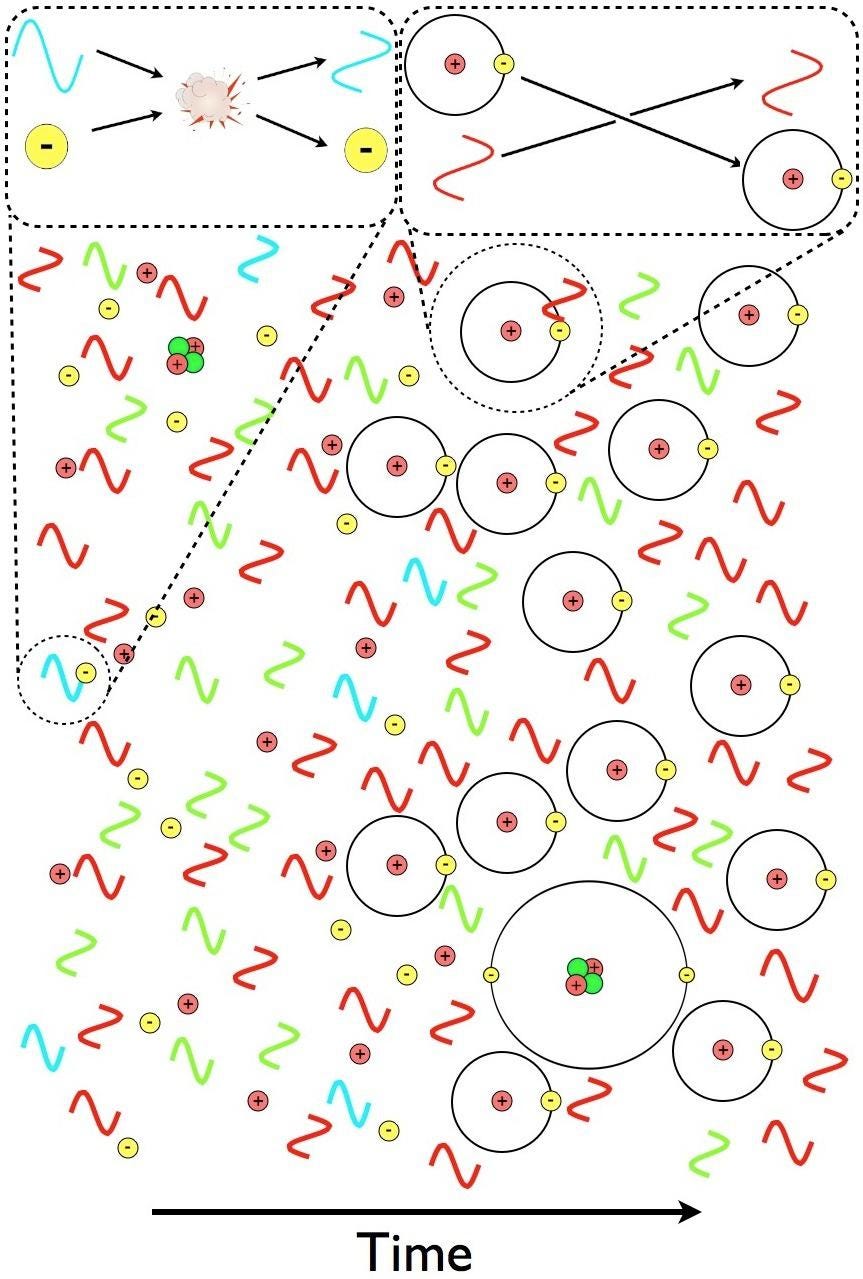
The biggest, hardest-to-understand difference about the Big Bang from everything else that generates an observable signal is this: the Big Bang doesn’t have a single spatial point-of-origin. It’s not like a stellar event or explosion; there’s no location or place you can point to and say, “This is where the Big Bang happened: here, and nowhere else.” What makes the Big Bang so special is that it occurred everywhere, all throughout space, all at once. The Big Bang is instead representative of a moment in time, 13.8 billion years ago, when the Universe was in an ultra-hot, ultra-dense state: filled with matter, antimatter, and radiation.
Everything that’s occurred since that time has occurred in the aftermath of the event of the hot Big Bang. This includes:
- the annihilation of antimatter with matter (leaving just a tiny bit of normal matter behind),
- the formation of protons and neutrons,
- the fusion of light elements during Big Bang nucleosynthesis,
- the formation of neutral atoms,
- the ignition of the first stars,
- the formation of the earliest galaxies,
and so on. All of these events occurred everywhere throughout the Universe, but they only take place as we move forward in time. But when we observe the Universe, we always have to start from our location — right here, on Earth, in the Solar System, and within the Milky Way — and collect the light that’s arriving here-and-now. Any light that’s already washed over us and disappeared is now in the past, while the light from events that have not yet arrived will only be observable in the future.
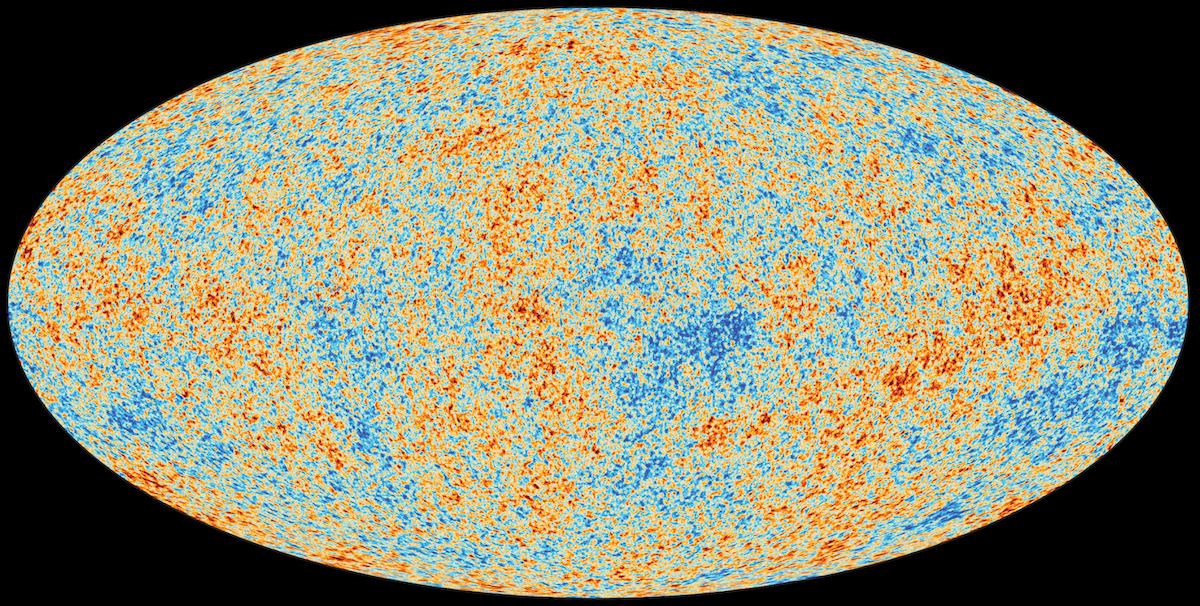
When we see a star like Sirius, the brightest star in our night sky, it’s located 8.6 light-years away, and so the light that’s arriving now, in June of 2024, was actually emitted back in November of 2015. When we see a galaxy like Andromeda, 2.5 million light-years away, we’re actually observing this galaxy as it was 2.5 million years ago, right around the time that the first member of the genus Homo was first emerging on Earth: Homo habilis. And when we look out at the most distant galaxy presently known, JADES-GS-z14-0, we’re seeing the light as it was an impressive 13.51 billion years ago, when the light was emitted. The only appreciable change that light has experienced comes from redshifting, or lengthening of its wavelength, due to the expansion of the Universe as it journeys to our eyes.
The leftover photons from the Big Bang, however, still remain in all directions. We just have to look a little bit farther: to light that was emitted 13.8 billion years ago, when those neutral atoms first formed and the Big Bang’s photons began free-streaming. Back when these neutral atoms formed, the Universe was less than one-billionth its present volume, and the temperature of this background radiation was right around 3,000 K: typical for the surface temperature of a red giant star. But 13.8 billion years later, that radiation has had its wavelength stretched by the expansion of the Universe, and has been driven to much lower temperatures of merely 2.725 K, or less than three degrees above absolute zero.

That light — the light that we observe as making up the CMB — was emitted from all points in the Universe, everywhere, all at once, some 13.8 billion years ago. The leftover glow from the Big Bang is light that’s arriving at our eyes today, which was emitted 13.8 billion years ago, and when we fold in the expansion of the Universe, we now “see” a surface where the CMB originates from that is now 46 billion light-years away from us. And still, we’re able to detect it.
There are 411 photons left over from the Big Bang permeating every cubic centimeter of space today. The photons we’re detecting today were emitted just 380,000 years after the Big Bang, journeyed through the Universe for 13.8 billion years, and are finally arriving at our telescopes and instruments right now. Tomorrow’s CMB might appear mostly identical to today’s, but its photons will come from a surface that’s slightly farther away: one light-day behind the photons we’re observing today.
The CMB actually is washing over us right now, and this very moment is the only opportunity we’ll ever have to see those specific CMB photons which are arriving at Earth today. It took a 13.8 billion year journey across the expanding Universe to bring them to our eyes, but they’ve arrived after the most cosmic voyage of all: from the Big Bang to us.
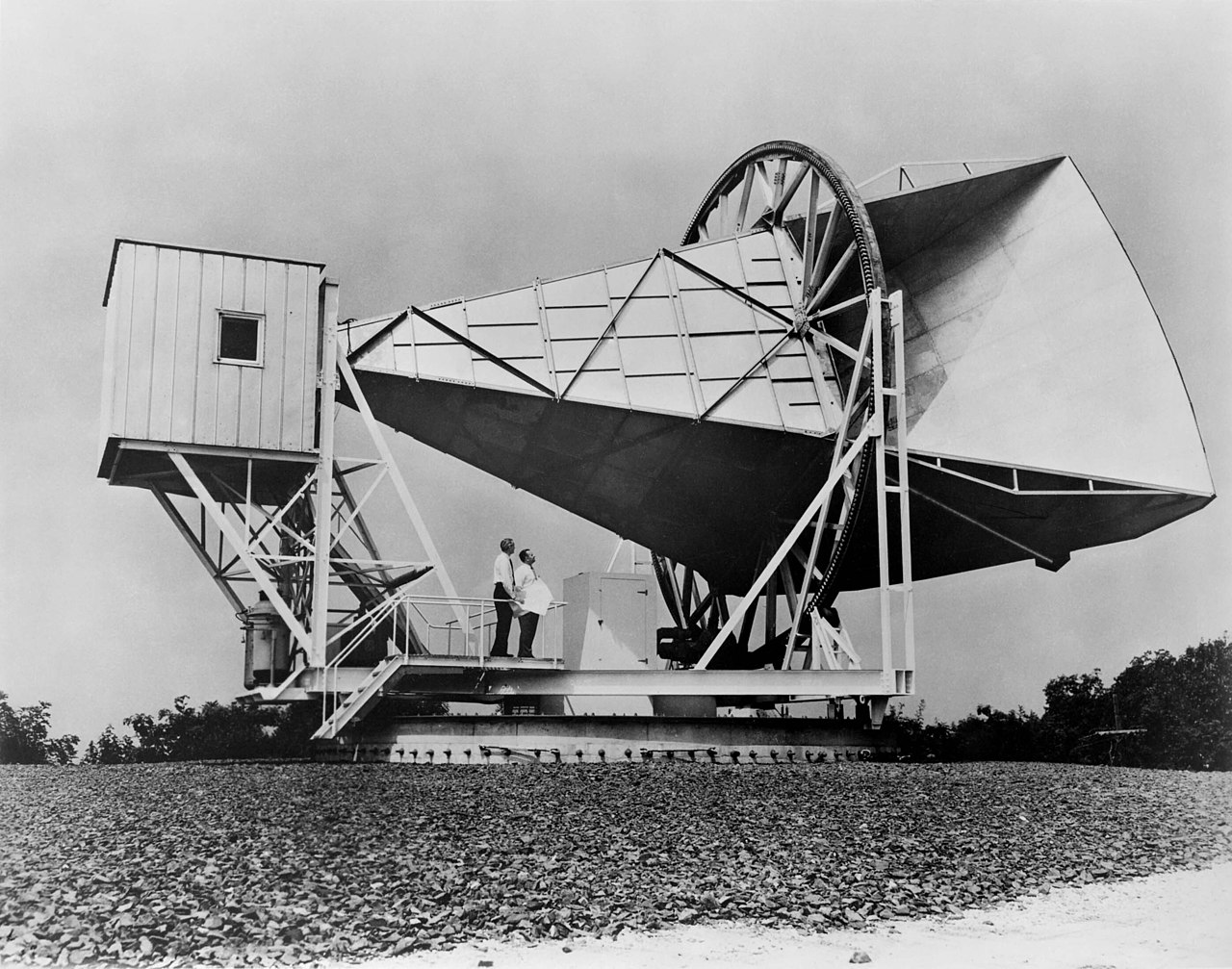
In other words, the Universe will never run out of photons for us to see. There will always be a faraway place, from our perspective, where the Universe is first forming stable, neutral atoms. At that location, the Universe becomes transparent to the ~3000 K photons that were previously scattering off of the ions (mostly in the form of free electrons) that were omnipresent, enabling them to simply stream freely in all directions. What we observe as the CMB are the photons emitted from that location that happened to be traveling in our direction at that moment, and which are arriving precisely now: at this very moment in cosmic history, from that early, omnipresent event.
However, the Big Bang’s leftover glow will never disappear entirely. No matter how far we extrapolate into the future, even as the density of photons and the energy-per-photon both continue to drop, a large enough, sensitive enough detector tuned to the right wavelength could always identify it. At some point, a hypothetical observer that’s still around will need to use radio waves to detect the Big Bang’s leftover glow, as the radiation will stretch so severely it will redshift out of the microwave portion of the spectrum and into the radio. We’ll have to build even more sensitive radio dishes, as the number density of photons will drop from hundreds per cubic centimeter to less than 1 per cubic meter. We’ll need larger dishes to detect these long-wavelength photons and gather enough light to identify this ancient signal, but it will persist for all of eternity. New photons, from ever farther away, will continue to wash over us, even arbitrarily far into the future, and as a result, the leftover glow from the Big Bang will eternally persist: never fully fading away.
